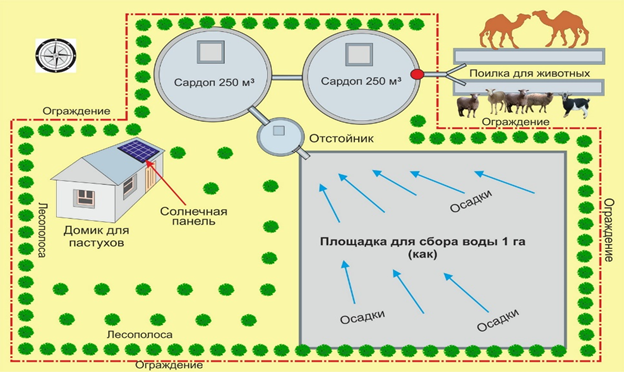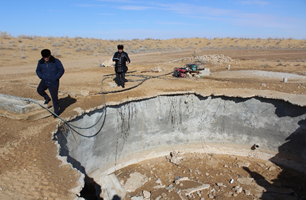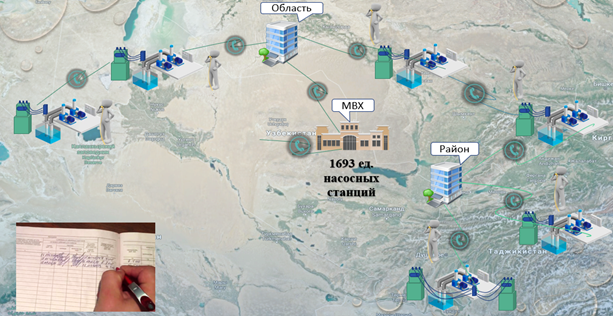In TURKMENISTAN, where deserts occupy up to 80% of the territory, so called “Sardoba” is the second most important source of water. An ancient traditional spring accumulates rainwater and groundwater for use.
Sardoba is relevant to this day in a country where it has the lowest level of precipitation in Central Asia (190 mm.). About 50% of the population of Turkmenistan lives in rural areas, the bulk of which is engaged in agriculture and animal husbandry. With more than 60% dependent on external water resources, Sardoba plays an important role in the maintenance of life. Recently, the contribution of agriculture, forestry and fisheries to the country's GDP fell from 33% in 1990 to 9% in 2015, which may also be explained by the growing water scarcity1.
Being in state ownership, Sardoba is leased to pastoralists for free. Currently, due to prolonged use and hot climate most of Sardobas are in poor condition and require reconstruction.
The European Union project "Nexus Dialogue in Central Asia" supports the reconstruction of Sardobas in the farming sector in Turkmenistan. It is expected that the reconstruction of two Sardobas will improve conditions within a radius of 30-35 km, restore the land within 3 to 4 years, increase the number to 6 000 heads.



Work in UZBEKISTAN is being carried out in another direction.
Pumping stations provide water to more than half of the irrigated land in Uzbekistan. The Ministry of water resources of the Republic of Uzbekistan (MWR RU) provides operation of more than 1500 pumping stations in the country, which consume 15% of electricity from the total electricity consumption and require 70% of the budget of MWR RU. This percentage does not include the maintenance of farms and collective farms.
Worn-out pumping stations exceed the established monthly energy consumption rates, including in regions experiencing energy shortages, and the collection of information takes a huge amount of time.
The project of the European Union "Nexus Dialogue in Central Asia" as a pilot project supports the Ministry of water management of the Republic of Uzbekistan in the technical assessment of pumping stations and the development of an investment proposal for the installation of an automated control system and monitoring of the results of electricity consumption. According to preliminary estimates, energy saving at pumping stations can be up to 80 million kWh, and water saving – up to 40 million m3 annually (!)2.

As for TAJIKISTAN, there are currently 11 large reservoirs on the territory of Tajikistan, including several reservoirs of regional importance. The total volume is 731.9 km2, which corresponds to approximately 13% of the annual flow of rivers in the Aral basin.3 Currently, the Republic of Tajikistan has been using the norms since the Soviet Union and the rules for the use of reservoirs, which are subject to revision in connection with the accumulation of operating experience, changes in the water situation, environmental requirements for the regime of use of runoff.
The European Union project "Nexus Dialogue in Central Asia" as a pilot project supports the Ministry of energy and water resources of Tajikistan in the development of guidelines for the development of rules for the use of reservoir resources.

[1] World Bank database
2 Data of the Ministry of water resources of the Republic of Uzbekistan
3 Ministry of energy and water resources of Tajikistan
Author: Aksulu Kushanova, Specialist of the Nexus Dialogue in Central Asia Project
The Project is funded by the European Union and implemented by the Regional Environmental Centre for Central Asia (CAREC) in partnership with the International Union for Conservation of Nature (IUCN) with the support of the Executive Committee of the International Fund for Saving the Aral Sea (EC IFAS). The Project’s Phase I will last until December 2019 (total budget: €1.52 mln; EU contribution: €1.3 mln).

